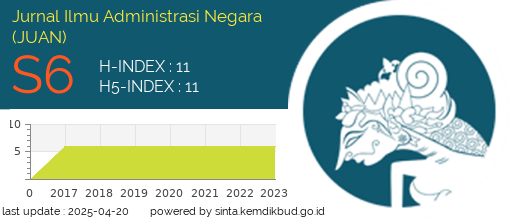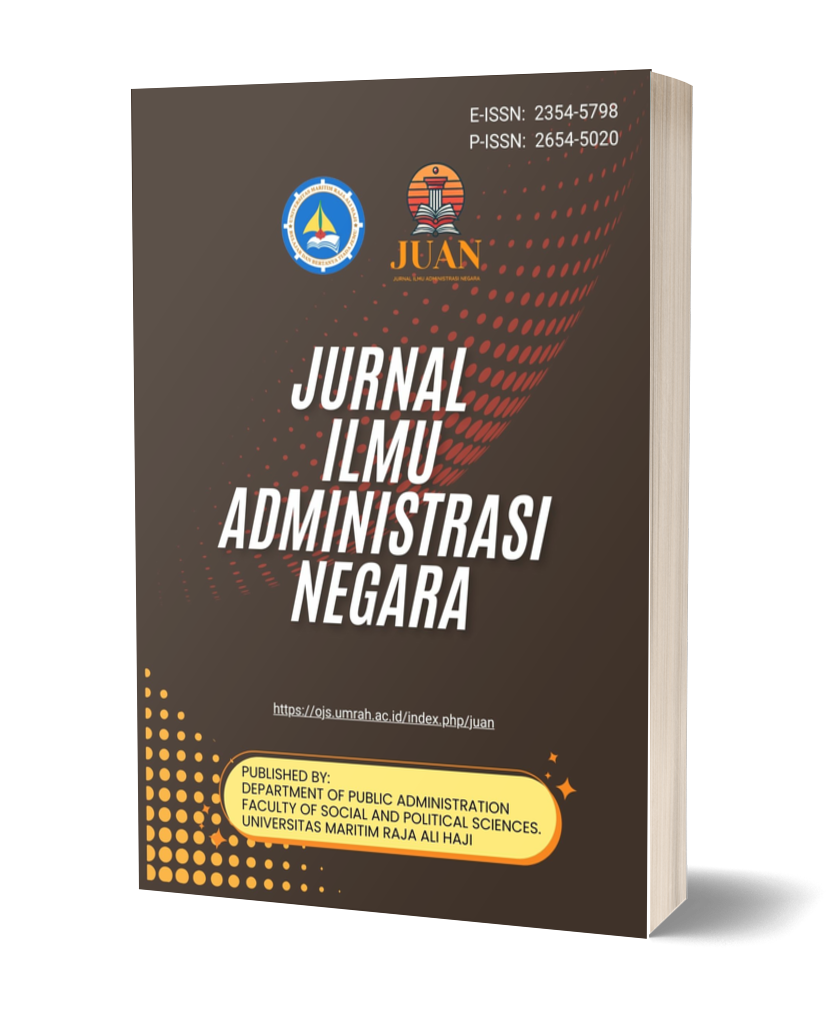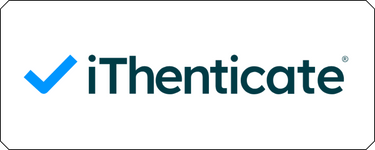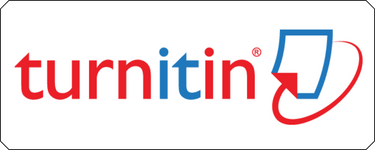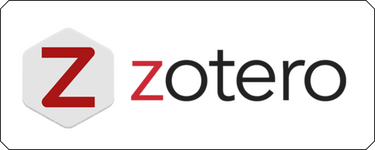Kelembagaan Pemerintahan Desa dan Pemberdayaan Masyarakat Dalam Implementasi Undang-Undang Desa
DOI:
https://doi.org/10.31629/juan.v9i1.3223Keywords:
Pemerintah Desa, Pemberdayaan Masyarakat, Undang-Undang DesaAbstract
The implementation of the Village Law policy requires support from village government institutions with a pattern of village community empowerment strategies according to existing local potential. The implementation of the Village Law is the hope of all village communities to create an independent village that has an identity, it is an appreciation for the right of the origin of the village with a village community empowerment approach that positions the village community as the main subject / actor not only as an object / target of program activities. village development. This research uses descriptive qualitative research methods, with the aim of finding out how the ability of village government institutions to empower village communities to become independent villages according to the mandate of the Village Law. The successful implementation of the Village Law is significantly influenced by the support of village institutional governance, namely, among others, the Village Government / Village Apparatus, Village Consultative Body (BPD), LPMD / LKMD, PKK, Karangtaruna, BKM / UPK PNPM, Dukuh, RW, RT and other non-governmental groups. The challenge is that institutional performance in accordance with the main tasks of the village's function contributes optimally to the development of the welfare of the village community. So the role of village institutional governance is needed in realizing village empowerment according to the potential, characteristics / local culture of the local village.
Downloads
References
Buku dan Jurnal
Aspariyana, A. (2018). Dampak Modernisasi Perilaku terhadap Budaya. Teraju Umrah. https://teraju.umrah.ac.id/dampak-moderenisasi-perilaku-terhadap-budaya/
Dye, T. (1972). Understanding public policy. Prentice-Hall.
Hair, J. F., Black, W. C., Babin, B. J., & Anderson, R. E. (2010). Multivariate Data Analysis; a global perspective (Seventh Ed). Pearson Education Limited.
Hogwood, B. W., & Gunn, L. A. (1984). Policy analysis for the real world. Oxford University Press.
Lindblom, C. E., & Woodhouse, E. J. (1993). The policy-making process (3rd ed.). Prentice Hall.
Moleong, L. J. (2012). Metodelogi penelitian kualitatif. Remaja Rosdakarya.
Parsons, W. (1992). Public policy : An introduction to the theory and practice of policy analysis. Elgar.
Rizkita, S. (2016). Akuntabilitas pemerintah desa. Kedesa.Id. http://kedesa.id/id_ID/akuntabilitas-pemerintah-desa/
Solichin, A. W. (2008). Analisis Kebijakan: Dari Formulasi ke Implementasi Kebijakan Negara. Jakarta: Bumi Aksara.
Solichin, A. W. (2012). Analisis kebijakan : Dari formulasi ke penyusunan model-model implementasi kebijakan publik. Bumi Aksara.
Sugiyono. (2012). Metode penelitian kuantitatif, kualitatif, dan R&D. Alfabeta.
Suharto, S. (2018). Kapasitas Pemerintahan Desa Dalam Implementasi Undang-Undang Nomor 6 Tahun 2014 Tentang Desa Di Jawa Tengah. Sosio Dialektika, 3(2).
Suharto, S. (2021). Kesiapan Desa Dalam Implementasi UU Nomer 6 Tahun 2014 Tentang Desa (Studi Kasus Di Desa Kawengen Kec. Ungaran Timur Kab. Semarang) (Doctoral dissertation, Universitas Wahid Hasyim Semarang).
Sujarweni, V. (2015). Akuntasi desa panduan tata kelola keuangan desa. Pustaka Baru Press.
Tangkilisan, H. N. S. (2003). Kebijakan publik yang membumi. Yogyakarta: Lukman Offset.
Topatimasang, D. K. K. (2000). Merubah Kebijakan Publik.
Wahab, S. A. (2012). Analisis kebijakan : Dari formulasi ke penyusunan model-model implementasi kebijakan publik. Bumi Aksara.
Weimer, D. L., & Vining, A. R. (2017). Policy analysis: Concepts and practice. In Policy Analysis: Concepts and Practice. Taylor and Francis. https://doi.org/10.4324/9781315442129
Downloads
Published
Issue
Section
License
You are free to:
- Share — copy and redistribute the material in any medium or format for any purpose, even commercially.
- Adapt — remix, transform, and build upon the material for any purpose, even commercially.
- The licensor cannot revoke these freedoms as long as you follow the license terms.
Under the following terms:
- Attribution — You must give appropriate credit, provide a link to the license, and indicate if changes were made . You may do so in any reasonable manner, but not in any way that suggests the licensor endorses you or your use.
- ShareAlike — If you remix, transform, or build upon the material, you must distribute your contributions under the same license as the original.
- No additional restrictions — You may not apply legal terms or technological measures that legally restrict others from doing anything the license permits.


